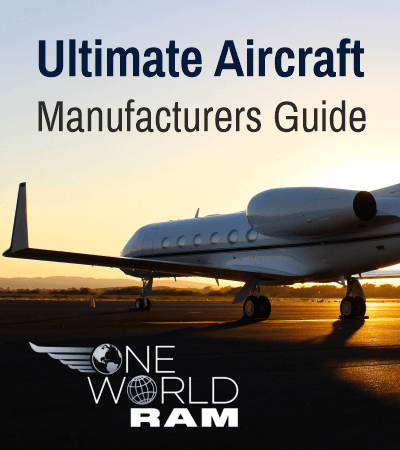Discover the remarkable Pilatus PC-9, a Swiss-engineered turboprop trainer aircraft that has revolutionized military and civilian pilot training. This comprehensive guide explores its impressive capabilities, technical specifications, and evolutionary journey from design to various operational variants.
Overview of the Pilatus PC-9
The Pilatus PC-9 represents Swiss aerospace excellence in turboprop trainer aircraft manufacturing. This single-engine, low-wing aircraft evolved significantly from its predecessor, the PC-7, delivering enhanced performance for military and civilian pilot training.
- Tandem-seat configuration optimized for instruction
- Enlarged cockpit with improved visibility
- Advanced ventral airbrake system
- Enhanced training versatility
- Superior comfort for both instructor and trainee
History and Development
The early 1980s marked the beginning of the PC-9’s development journey, as Pilatus Aircraft aimed to meet evolving military requirements. The aircraft’s maiden flight on May 7, 1984, launched a new era in training aircraft technology, with over 265 units produced to date. This success led to collaborations like the T-6 Texan II, developed jointly with Beechcraft.
Design and Features
The PC-9’s design emphasizes performance, reliability, and versatility through its low-wing configuration. The spacious cockpit houses modern avionics and instrumentation, mirroring systems found in frontline combat aircraft.
| Feature | Benefit |
|---|---|
| Low-wing configuration | Enhanced stability and maneuverability |
| Modern avionics suite | Combat aircraft familiarization |
| Ventral airbrake | Improved speed control and approach angles |
| Cost-effective operation | Attractive for training organizations |
Specifications of the Pilatus PC-9
The PC-9 exemplifies Swiss precision engineering with its advanced features and capabilities. The aircraft’s design optimizes both basic and advanced flight training, featuring significant improvements over its predecessor.
Technical Specifications
- Engine: Pratt & Whitney Canada PT6A-62 (1,150 shaft horsepower)
- Propeller: Four-bladed Hartzell HC-E4A-2 constant-speed
- Wingspan: 10.12 meters (33 ft 2 in)
- Length: 10.14 meters (33 ft 3 in)
- Maximum takeoff weight: 3,200 kg (7,055 lb)
- Safety: Martin-Baker CH11A zero-zero ejection seats
Performance Metrics
| Parameter | Value |
|---|---|
| Maximum speed | 556 km/h (345 mph) |
| Service ceiling | 11,580 meters (38,000 ft) |
| Maximum range | 1,537 km (955 mi) |
| Endurance | Over 3 hours |
| Climb rate | 20.1 m/s (3,940 ft/min) |
| G-force limits | +7/-3.5 G |
Variants of the Pilatus PC-9
The PC-9’s evolution has produced several variants to meet diverse training requirements worldwide. These iterations demonstrate Pilatus Aircraft’s commitment to innovation in military and civilian pilot training.
PC-9M Variant
The PC-9M represents a significant advancement over the original design, featuring enhanced stability and modern training capabilities. This variant incorporates an upgraded cockpit layout with advanced avionics, improved aerodynamics, and superior handling characteristics, making it an ideal platform for contemporary military aviation training.
Operational Use and Users
The Pilatus PC-9 has established itself as a cornerstone in military aviation training worldwide. Its versatile design and advanced capabilities create an ideal bridge between basic flight instruction and tactical combat training. The aircraft’s proven reliability and cost-effectiveness have made it particularly attractive for air forces seeking to modernize their training fleets.
- Adaptable training platform for various skill levels
- Cost-effective operation and maintenance
- Proven reliability in diverse conditions
- Effective simulation of advanced jet trainer characteristics
- Flexible mission capabilities
Military and Civilian Operators
| Category | Notable Operators |
|---|---|
| Primary Military Users | Swiss Air Force, Slovenian Air Force and Air Defence, Croatian Air Force, Royal Thai Air Force, Irish Air Corps |
| Civilian Applications | Advanced flight training schools, Commercial pilot training centers, Specialized mission operators |
Aerobatic Teams and Demonstrations
The PC-9’s exceptional maneuverability has made it a preferred choice for aerobatic display teams worldwide. These teams demonstrate the aircraft’s impressive agility and responsiveness through complex maneuvers and precision flying formations.
- Formation flying capabilities
- High-precision aerobatic maneuvers
- Stable platform for complex demonstrations
- Public relations and recruitment tool
- Showcase for military aviation capabilities
Comparisons with Related Aircraft
The PC-9 represents a significant advancement in turboprop trainer design, particularly when compared to its predecessor, the PC-7. Key improvements include an enlarged cockpit with enhanced ergonomics, superior instrumentation, and the addition of a ventral airbrake system. These features, combined with minimal structural commonality with the PC-7, establish the PC-9 as a distinctly advanced training platform.
PC-9 vs. Beechcraft T-6 Texan II
| Feature | PC-9 | T-6 Texan II |
|---|---|---|
| Cockpit Design | Standard configuration | Pressurized system |
| Engine Power | Standard turboprop | Enhanced power output |
| Avionics | Conventional systems | Digital glass cockpit |
| Training Focus | Versatile training platform | U.S. military specifications |
Impact on Military Training
The PC-9’s influence extends beyond its operational capabilities, setting new standards in military pilot training worldwide. Its success has validated the effectiveness of advanced turboprop trainers in preparing pilots for jet aircraft transition, leading to widespread changes in training doctrines and aircraft procurement strategies.
- Established new benchmarks in training aircraft capabilities
- Influenced modern training methodologies
- Demonstrated cost-effective transition to jet aircraft
- Shaped future training aircraft design requirements
- Enhanced international training standardization





Leave a Reply